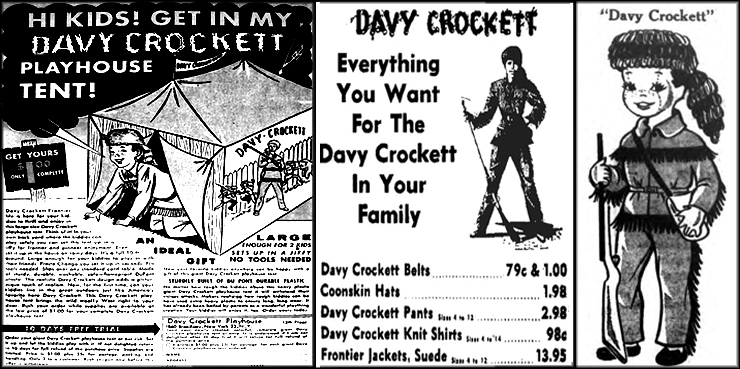In the spring of 1955, coonskin caps and similar paraphernalia became the fashion among youngsters when a song, “The Ballad of Davy Crockett” by Bill Hayes, reached the top spot on the pop charts, remained on the pinnacle of the charts for five weeks and eventually sold over seven million records. Other artists also recorded it.
Davy was born in 1786 on the banks of the Nolichucky River. Today, a restored cabin at the Davy Crockett Birthplace State Park in Limestone marks the spot of his birth. After a remarkable outdoorsman and political career that eventually took him to Texas, the pioneer bravely gave his life at the Alamo in 1836, along with other volunteers.
When I was a young lad, my father used to drive my mother and me to the park, usually on a Sunday afternoon outing, which included steering our car through a shallow creek and swinging on thick grapevines in trees along the riverbank. Those were fun times.

Davy Crockett became a five-part television special, which aired in one-hour black and white episodes on ABC’s “Disneyland.” The story featured Fess Parker as the real-life frontiersman and Buddy Ebsen (later Jed Clampett on The Beverly Hillbillies) as his friend, George Russell:
Episode 1: “Davy Crockett, Indian Fighter” (Dec. 15, 1954). The initial program introduces the characters and unfolds the storyline. In one scene, Davy and a bear savagely go head-to-head in the bushes with Crockett, of course, emerging as victor. Major General Andrew Jackson summons the two men to secure a truce with a band of Indians who had assaulted a military outpost. Davy earns the respect of their leader, Chief Red Stick, after beating him in hand-to hand combat.
Episode 2: “Davy Crockett Goes to Congress” (Jan. 26, 1955). Davy learns of the death of his wife, Polly, back in Tennessee. Later, he wins a seat first in the Tennessee House of Representatives and later in the U.S. House.The pioneer quickly learns that Andrew Jackson, then a candidate for president, is using him to help rob Indians of their rightful property. Disgusted, Davy quits politics and returns to the great outdoors that he loves.
Episode 3: “Davy Crockett at the Alamo” (Feb. 23, 1955). Crockett and Russell reunite and head for the Alamo in San Antonio, Texas to help the Texans secure the fort. They realize that the outlook is grim but, against all odds, stick it out and fight a spirited battle to the finish. In the final scene, Davy swings his rifle as hordes of Santa Anna’s soldiers descend upon him. Disney spares his viewers from seeing Crockett’s death scene.
Episode 4: “Davy Crockett’s Keelboat Race” (Nov. 16, 1955). Even though Davy had perished at the Alamo, Disney was not about to let his popular specials come to an end. Crockett reappears in a flashback in Kentucky with his buddy, George, to take on Mike Fink (Jeff York), the pompous, self-proclaimed “King of the River.” They are challenged on a money bet to a keelboat race to New Orleans. Fierce competition and shenanigans ensue as the two boats travel down the mighty Mississippi River.
Episode 5: “Davy Crockett and the River Pirates” (Dec. 14, 1955). This concluding story is a continuation of episode 4, but in this one, Davy and George befriend Fink to bring to justice a group of bandits posing as Indians. They enlist a traveling minstrel who is secretly in cahoots with the outlaws. It’s a race against time to avoid a major conflict. The outcome is predictable.
Although the five television specials were seen on black and white TV sets, Disney wisely filmed the originals in color. Later, he combined the first three shows, totaling 150 minutes, into a 93-minute motion picture titled, “Davy Crockett, King of the Wild Frontier” that was released on May 25, 1955. He then put the last two episodes of 100 minutes into an 81-minute edition called, “Davy Crockett and the River Pirates. It hit the theatres on July 18, 1956.
A viewing of those movies today conjures up memories of those wonderful days in the 1950s.

Comments are closed.